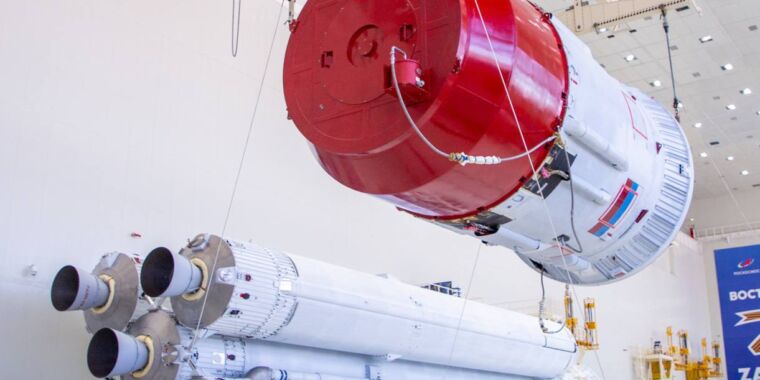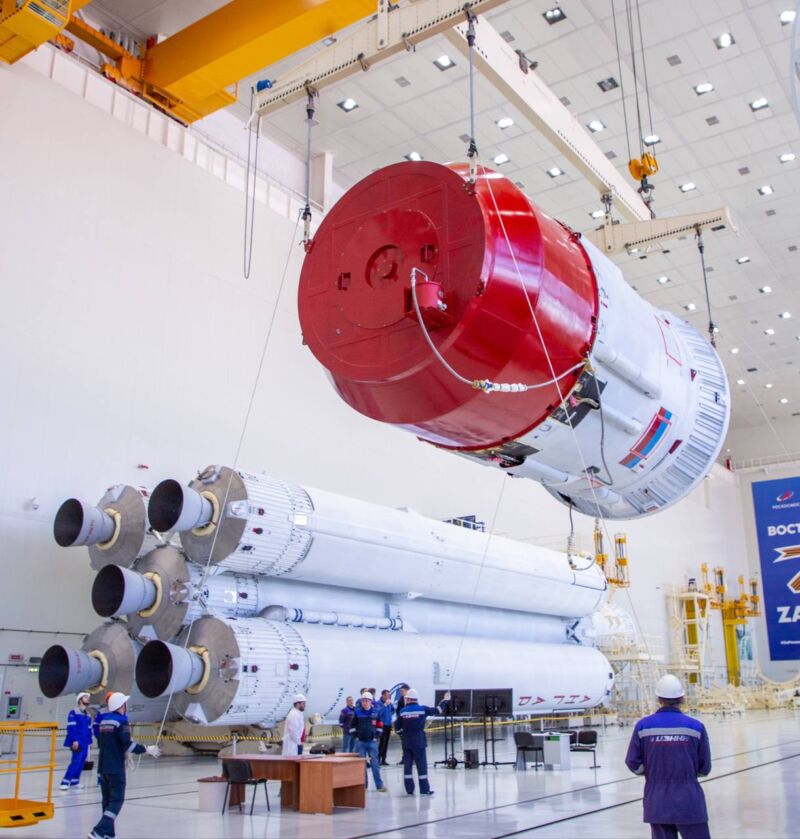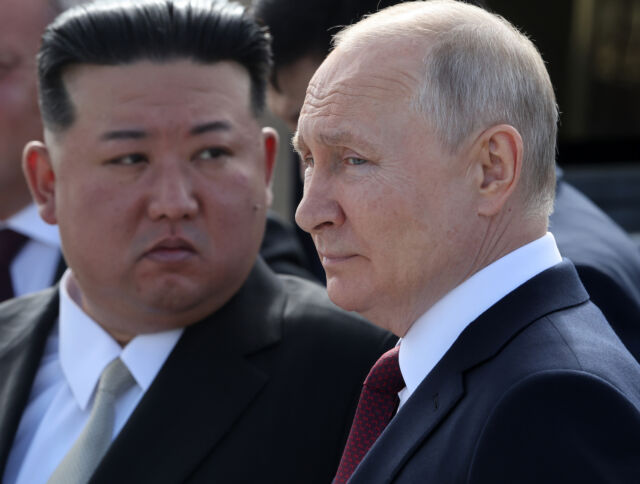Russia’s next-generation rocket is a decade old and still flying dummy payloads

A winding road —
Russia’s heavy-lift Angara A5 rocket is about to launch on its fourth test flight.

Enlarge / Technicians assemble an Angara A5 rocket at the Vostochny Cosmodrome in Russia’s Far East.
Roscosmos
By some measures, Russia’s next-generation flagship rocket program—the Angara—is now three decades old. The Russian government approved the development of the Angara rocket in 1992, soon after the fall of the Soviet Union ushered in a prolonged economic recession.
It’s been nearly 10 years since Russia launched the first Angara test flights. The heaviest version of the Angara rocket family—the Angara A5—is about to make its fourth flight, and like the three launches before, this mission won’t carry a real satellite.
This next launch will be a milestone for the beleaguered Angara rocket program because it will be the first Angara flight from the Vostochny Cosmodrome, Russia’s newest launch site, in the country’s far east. The previous Angara launches were based out of the military-run Plesetsk Cosmodrome in northern Russia.
All dressed up and nowhere to go
On Wednesday, Russia’s space agency, Roscosmos, said technicians at Vostochny have fueled the Angara A5’s Orion upper stage and will soon install it on the rest of the rocket. The Angara A5 will roll to its launch pad a few days before liftoff, currently scheduled for next month.
The Angara A5 rocket is supposed to replace Russia’s Proton launch vehicle, which uses toxic propellant and only launches from the Baikonur Cosmodrome in Kazakhstan. Angara’s launch pads are on Russian territory. Until a few years ago, the Proton was a competitor in the global commercial launch market, but the rocket lost its position due to reliability problems, competitive pressure from SpaceX, and the fallout of Russia’s invasion of Ukraine.
Russian officials once touted Angara as a successor to Proton on the commercial market. Now, Angara will solely serve the Russian government, but it’s doubtful the government has enough demand to fill the Angara A5’s heavy latch capacity on a regular basis. According to RussianSpaceWeb.com, a website run by veteran Russian space reporter Anatoly Zak, the Russian government didn’t have any functional satellite ready to fly on the upcoming Angara A5 launch from Vostochny.
Eventually, the Angara A5 could take over the launch responsibility of the handful of large satellites that require the capacity of the Proton rocket. But this is a small number of flights. The Proton has launched three times in the last two years, and there are roughly a dozen Proton launch vehicles remaining in Russia’s inventory.
Russia plans a next-generation crew spacecraft, Orel, that officials claim will begin launching on the Angara A5 rocket in 2028. There’s no evidence Orel could be ready for test flights within four years. So, while the Angara rocket is finally flying, albeit at an anemic rate, there aren’t many payloads for Russia to put on it.

Enlarge / North Korean leader Kim Jong Un and Russian President Vladimir Putin visited the Angara rocket’s launch pad at the Vostochny Cosmodrome last year.
Russia’s economic woes might explain some of the delays that have befallen the Angara program since 1992, but Russia’s space program has long suffered from chronic underfunding, mismanagement, and corruption. Angara is the only rocket Russia has developed from scratch since the 1980s, and the Russian government selected Khrunichev, one of the country’s oldest space companies, to oversee the Angara program.
Finally, in 2014, Russia launched the first two Angara test flights, one with a single-booster lightweight version of the rocket called the Angara 1.2, and another with the heavy-lift Angara A5, made up of five Angara rocket cores combined into one rocket.
The Angara A5 can place up to 24.5 metric tons (about 54,000 pounds) into low-Earth orbit, according to Khrunichev. The expendable rocket has enough power to launch modules for a space station, or deploy the Russian military’s largest spy satellites, but in 2020, each Angara A5 reportedly cost more than $100 million, significantly more than the Proton.
The smaller Angara 1.2 has flown twice since 2014, but both missions delivered functional satellites into orbit for the Russian military. The much larger Angara A5 has launched three times, all with dummy payloads. The most recent Angara A5 launch in 2021 failed due to a problem with the rocket’s Persei upper stage. The Orion upper stage set to fly on the next Angara A5 mission is a modified version of the Persei, which is itself modeled on the Block-DM upper stage, a design with its roots in the 1960s.
Essentially, the Angara A5 flight will allow engineers to test out changes to the upper stage and allow Russia to activate a second launch pad at Vostochny, which itself has been mired in corruption and delays. Medium-lift Soyuz rockets have been flying from Vostochny since 2016.



